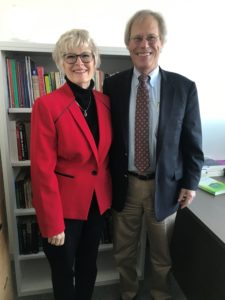
A Conversation with Stephen L. Klineberg and Debbie Z. Harwell
This year marks the thirty-ninth annual Houston Area Survey produced by the Kinder Institute for Urban Research at Rice University under the direction of Dr. Stephen Klineberg. The survey, which comes out each spring, has become something of a local legend, as its perspectives on the changing Houston demographics and the shifts in attitudes trace almost forty years of our history and growth as a community – both statistically and personally.
Stephen Klineberg is himself a local legend. If Houston Public Media’s guest list had an equivalent for J. J. Watt or James Harden, it would be Stephen Klineberg, who monitors the city’s pulse. A New York native, Klineberg received his Ph.D. in sociology at Harvard and taught at Princeton before coming to Rice University in the early 1970s for what he expected to be a short stint. Over forty years later he continues to be intrigued by the city, which he sees as a sociological laboratory, observing, “Houston may be the most fascinating and consequential city in America. This is where the American future is going to be worked out.”
Klineberg’s book, Prophetic City: Houston on the Cusp of a Changing America, due out this spring, examines Houston’s demographic shifts, its economy increasingly built on technical skills and education, and the new importance of the city’s quality-of-life attributes. He describes Prophetic
City as “a book about Houston, written by the people of Houston,” including not only those in the random samples who participated in the annual surveys but also the additional sixty interviews researchers conducted.

Photo by Ramiro Reyna Jr., courtesy of Shutterstock.
The Kinder Houston Area Survey began as a fifteen-minute telephone interview that has grown to an average length of more than twenty-five minutes. It reaches a scientifically selected, randomly generated, representative sample of one thousand adults in Harris County, with (in
different years) additional surveys conducted in Fort Bend and Montgomery counties and oversamples into Houston’s Asian communities. Some questions are included every year, others are asked every few years, when a shift in opinion or lack of a shift would be significant to note; and additional questions appear periodically to explore emerging issues.
No other city in the United States has been tracked in this way over such a long period of time.
It was my privilege to sit down with Stephen Klineberg– who is just as delightful as the legend you hear on the radio – to discuss some of the historic changes Houston has experienced and how Houstonians are responding to our biggest challenges.
The interview discusses how the survey got started, Houston’s demographic transformation, the city’s knowledge economy, its educational divides, the impact of concentrated poverty, the ways in which Houston is reinventing itself, changes across generations, attitudes about walkable urbanism, Hurricane Harvey, and how the city is addressing its new realities. Below are a sample of the fifteen charts and graphs found in the article to illustrate the findings of the Houston Area Surveys.
You can read a few excerpts below. To read the full article, click here, or click on Buy Magazines above to purchase a print copy or subscribe.
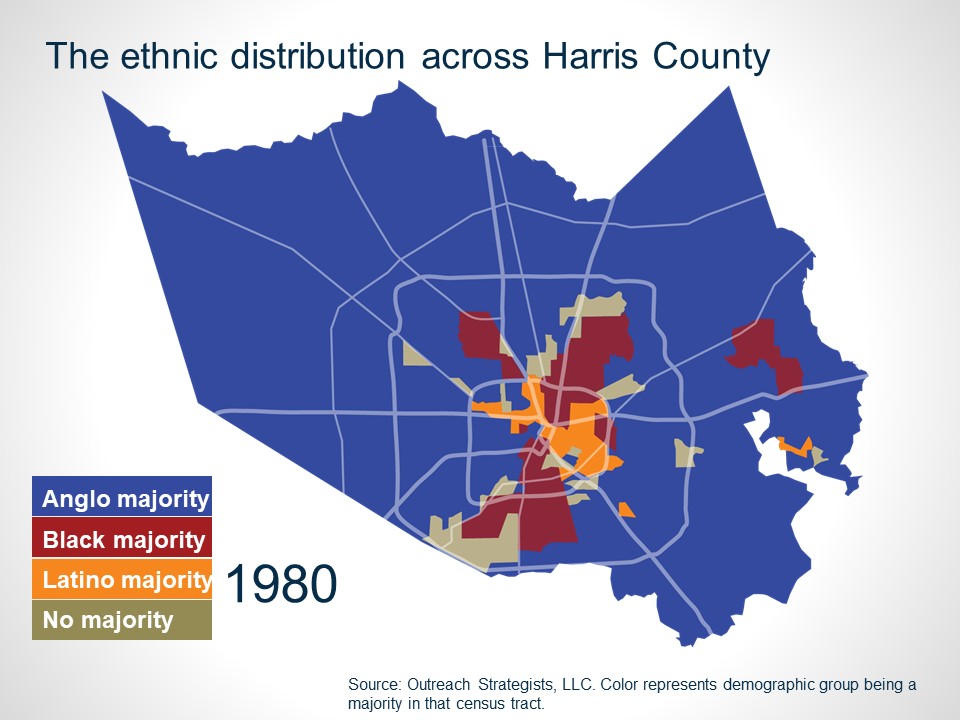
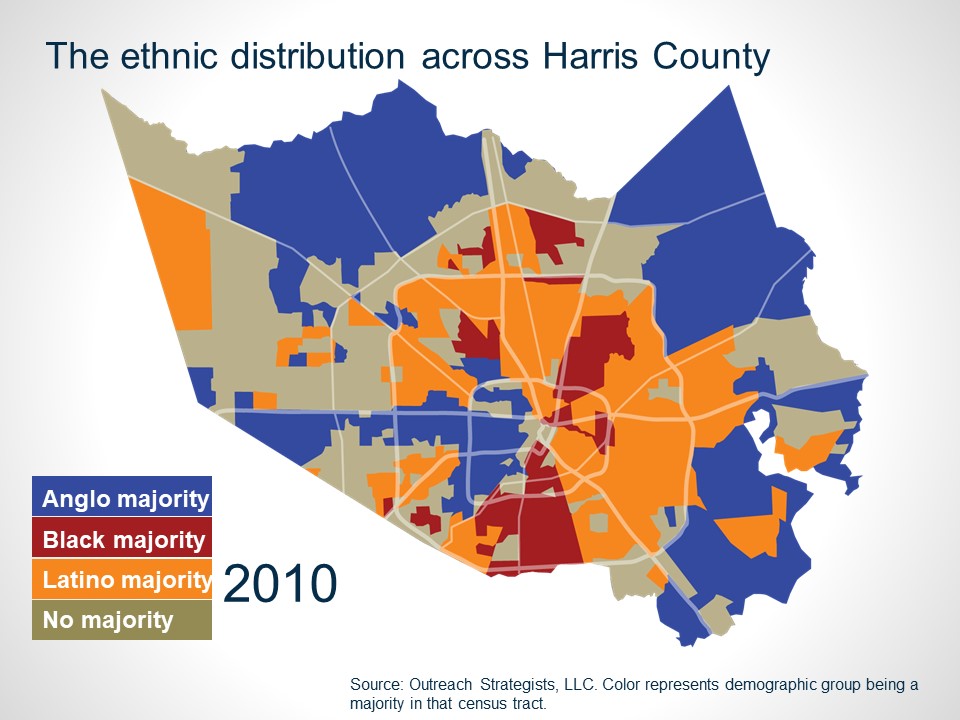
In the interview Dr. Klineberg discusses the shift in Houston’s ethnic makeup: “No city in America has experienced the transition as suddenly, as completely, and as irreversibly, as Houston, Texas. Throughout its history, this black/white southern city was dominated and controlled in an automatic, taken-for granted way by white men. In 1980 there were 2.4 million people living in Harris County; 63 percent were Anglos, 20 percent were African Americans, 16 percent were Hispanics, and 2 percent were Asians. After the oil bust of 1982, the Anglo population of Harris County stopped growing.
During the past three and a half decades, all the net growth of this, the most rapidly growing city in America, has been due to the influx of Hispanics, Asians, and African Americans. Today, Houston is by some measures the single most ethnically diverse major metropolitan area in the entire country. As of 2016, Harris County, with a population of 4.5 million, is 42 percent Hispanic, 19 percent African American, 8 percent Asian, and 31 percent Anglo. Fort Bend County is now 24 percent Hispanic, 21 percent Asian, 20 percent African Americans, and 34 percent Anglo.”
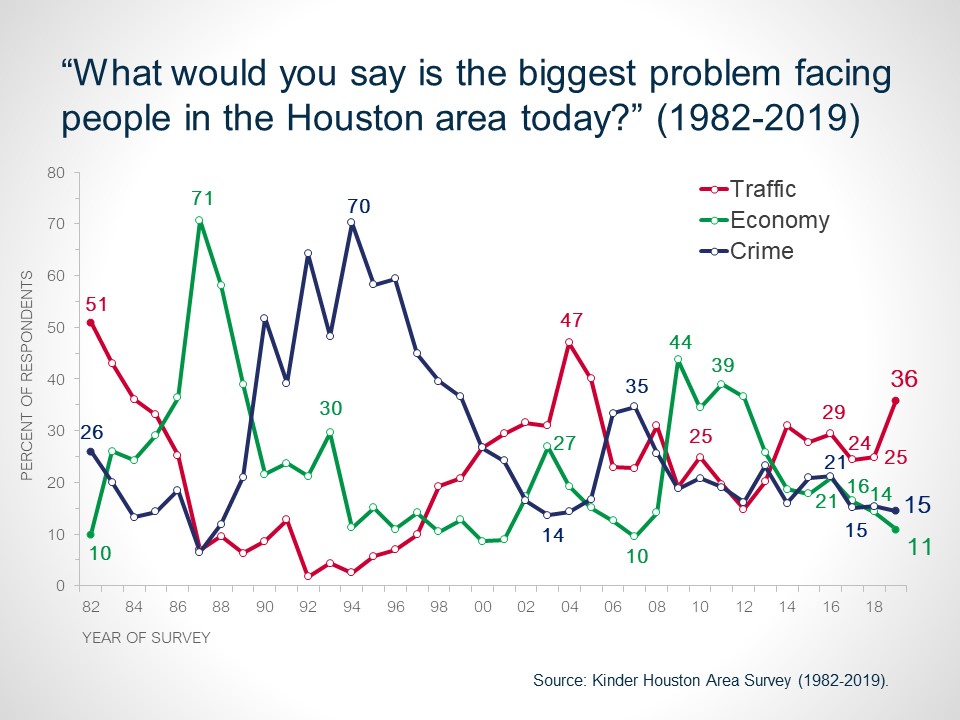
When asked about the survey question tracking the biggest problem facing Houstonians, Dr. Klineberg replied in part, “The first question in each year’s survey asks the respondents to name what they consider to be the biggest problem in Houston. In 1987, at the depths of the oil-boom collapse, 71 percent cited the economic crisis (poverty, unemployment, homelessness). In the mid-1990s, crime was the great preoccupation, mentioned spontaneously by 70 percent of the area residents in 1995 during the crack-cocaine epidemic. In the more recent surveys, as economic concerns have lessened and crime has receded, traffic congestion has become the dominant preoccupation.
To read the full article, please click on Buy Magazines to subscribe.
For more information on Rice Kinder Institute For Urban Research, please visit: https://kinder.rice.edu/
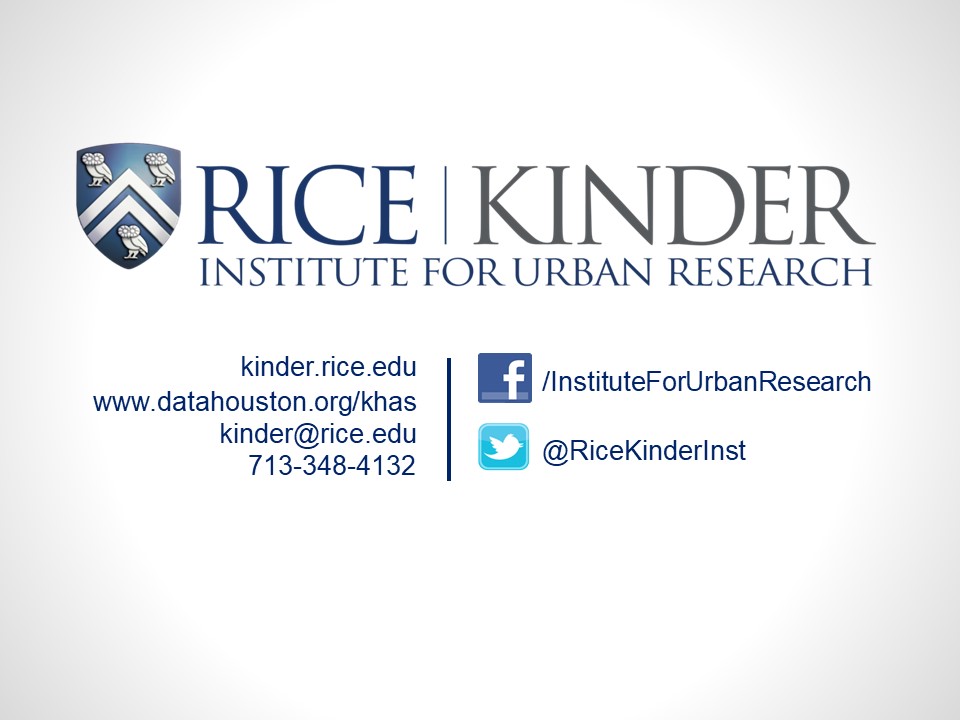


 Follow
Follow